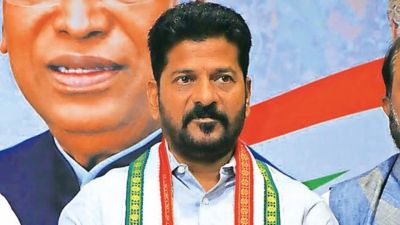Why terror blasts echo in this Kerala village
Basheer’s role in the 2003 Mulund blasts came through after a key accused, Noor Mohammed Abdul Ansari, confessed it was he who organised the funds and logistics...

When a terror bomb goes off somewhere, the echoes often reach this Kerala village, home to one of India’s most wanted men.
‘‘Is he involved this time?’’ ask a couple of curious men directing you to C A M Basheer’s home in Kaprisseri village, near Aluva.
Many here remember Basheer as the intense and quiet young man who became president of the Students Islamic Movement of India (SIMI), and then disappeared in 1993. Basheer, in his mid-forties now, has a post-graduate diploma in aeronautical engineering, and had worked for a while at New Delhi’s Safdarjung airport, before he became a key accused in Mumbai’s past terror attacks.
Intelligence sources say he had his arms and explosives training in the 1980s at a camp run by the Jamaat-e-Islami (JEI) of Pakistan in the North-West Frontier Province (NWFP), and was an important mover of what is called the K-2 deal (coming together in the Kashmir and Khalistan issues), which SIMI brokered with the Canada-based International Sikh Youth Federation (ISYF). Its chief Lal Singh had allegedly met Basheer in Lahore.
The sources say Basheer attempted to recruit and send several young men across the border to the JEI subversive training camps, but could not. The JEI then got Hizbul Mujahideen in Kashmir to train the SIMI cadre whom Basheer organised, in their facilities.
In 1990, he became a whole-time SIMI worker and, intelligence sources say, went to Pakistan more than once. By 1992 a warrant was out for him in connection with a planned terror attack in Ahmedabad (his two co-accused, Khalistan militant Lal Singh and Saquib Abdul Hameed Nachan were jailed). The next year, soon after the 1993 Mumbai blasts, Basheer fled to Saudi Arabia. Though a key suspect, the extent of his actual role in that blast is still to be established, the sources say.
But his role in the blasts at Mumbai’s Mulund in March 2003 came through after a key accused, Noor Mohammed Abdul Ansari, confessed it was Basheer who organised the funds and logistics. Basheer’s name had also figured as one of those who helped organise a band of Indian Islamic zealots based in the Gulf who went to Iraq to join jehadis fighting US forces.
Interestingly, intelligence sources also say Basheer was greatly responsible for the rigidly pro-Wahabi Lashkar-e-Toiba agreeing to play ball with the more liberal SIMI, which even has women activists with important profiles—unacceptable in the LeT scheme of things.
‘‘What we are looking at is a man operating a highly organised and effective terror network, enjoying access to substantial funds, including money generated from West Asia. He is also likely to be involved in the actual brasstack logistics of many terror strikes,’’ the sources said. ‘‘Forget Pakistan, that’s not where the funds and logistics are taken care of, for outfits like SIMI — it is West Asia.’’
In Kaprisseri, however, Basheer is still the bright local boy who went away and, may be, got into some kind of wrong company. ‘‘He is my son, my youngest child,’’ says his frail old mother at his home near the village madrasa. ‘‘He can’t hurt anyone,’’ she tells you, before a bunch of ‘‘relatives’’ troop in and curtly show you the door, saying this is no time to talk.





- 01
- 02
- 03
- 04
- 05


























